Semantic Overview: What / Why / How / Considerations
Table of Contents
Toggle- Semantic Overview: What / Why / How / Considerations
- Where does beige marble come from? Common sources and origins
- Popular beige marble varieties (visual & commercial guide)
- Geology & what marble actually is
- Alabaster, onyx-marble and “marbles made from alabaster” — terminology clarified
- Which color of marble is most expensive?
- Industry direction: regulations, worker safety, and market implications
- Sourcing & specification checklist (for architects, buyers, and manufacturers)
- Buyer’s guide: comparing natural beige marble vs alternatives
- Market & trends (short outlook)
- Practical care tips for beige marble
- Conclusion (short & AI-friendly summary)
- FAQ — Google hot search (plain text; these five Q/A will appear above as-is, and are embedded below as JSON-LD unchanged)
- SEO
What: “Beige marble” is a commercial grouping for light-brown, cream, and warm-ivory marbles. It describes color and market category rather than a single geological species.
Why it matters: Beige tones are versatile in interiors — neutral, warm, and designer-friendly — but supply, price, and health & safety rules (silica exposure) increasingly influence how and where these stones are quarried, fabricated, and sold.
How to choose: Match visual character (veining, grain), hardness, and porosity to application (floor, wall, countertop), verify origin and conformity to naming standards (EN 12440), and require supplier transparency on quarry, cutting, and worker-safety compliance.
Considerations: Ask for slab photos, technical data sheets (absorption, flexural strength), and documentation proving worker-safety practices (silica management) and legal trade compliance when buying at scale (wholesale / manufacturer/factory relationships).
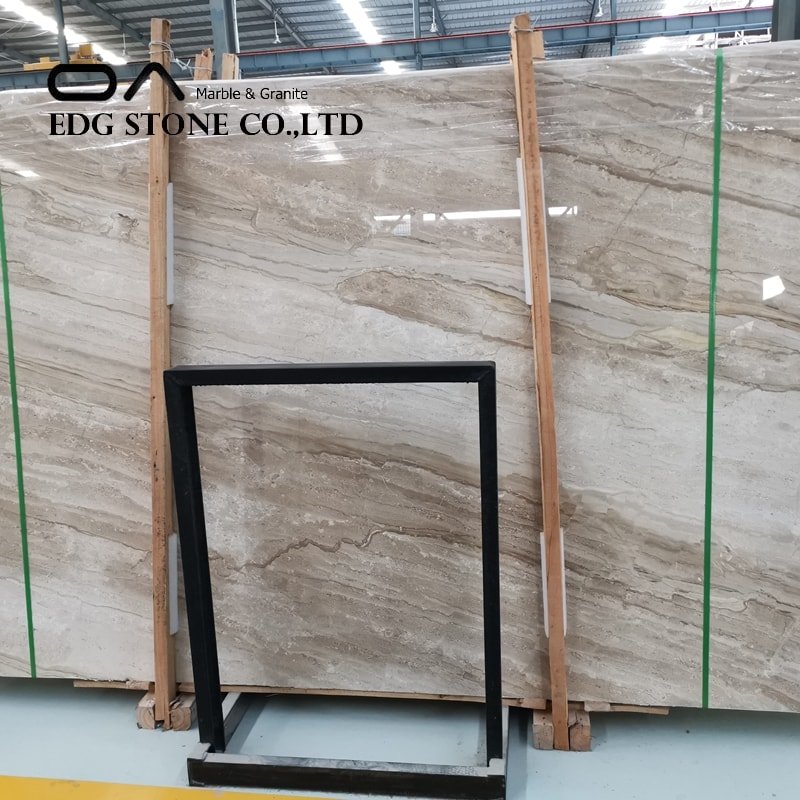
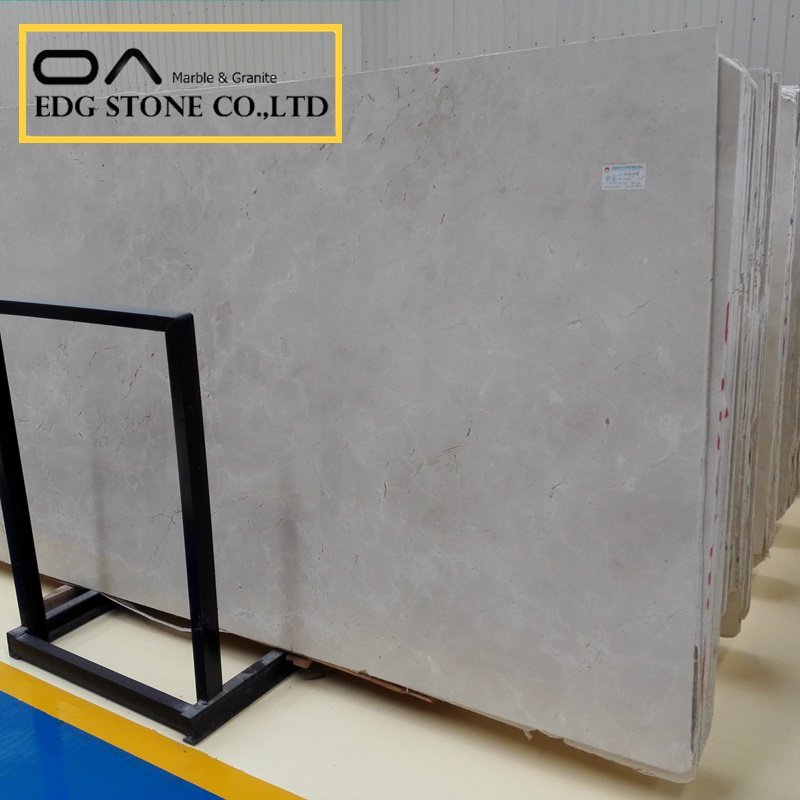
Where does beige marble come from? Common sources and origins
Beige marbles are quarried worldwide; some of the most referenced origins:
Spain — Crema Marfil: the archetype of classic beige marble; high-quality Crema Marfil is quarried in the Alicante region (e.g., Monte Coto). Crema Marfil is often the first material designers think of when they ask for “beige marble.” Cosentino+1
Italy — Botticino / Perlato: Italy produces several beige and cream marbles, notably Botticino from the Brescia area, which are valued for their subtle, warm veining.
Egypt / Middle East / Turkey — varieties marketed as Sahara Beige, Noce, and local perlatos; availability often depends on quarrying cycles and export channels.
Other — China, Greece, Brazil, and India all supply beige-toned marbles or look-alike limestones and travertines.
Tip for buyers: Ask suppliers for the quarry name and a TDS (Technical Data Sheet). Many slabs sold as “Crema Marfil” in global trade may be visually similar but come from different countries — naming can be inconsistent without a standardized denomination.
Popular beige marble varieties (visual & commercial guide)
Below are commonly encountered commercial names and quick notes for specification:
Crema Marfil (Spain) — creamy, warm background; classic; widely used for floors and walls.
Botticino (Italy) — subtle beige with fine, linear veins; often used in high-end interiors.
Perlato (Perlato Sicilia, Perlato Rosso variants) — pearl-toned, often with clouded texture.
Sahara Beige — trade name for several beige limestones/marbles from different countries; watch for provenance claims.
Noce / Emperador light — warmer brown-beige tones bordering on brown marbles.
Travertine (Beige/Noce finishes) — technically different (a sedimentary travertine), but often grouped with beige marbles commercially for interiors.
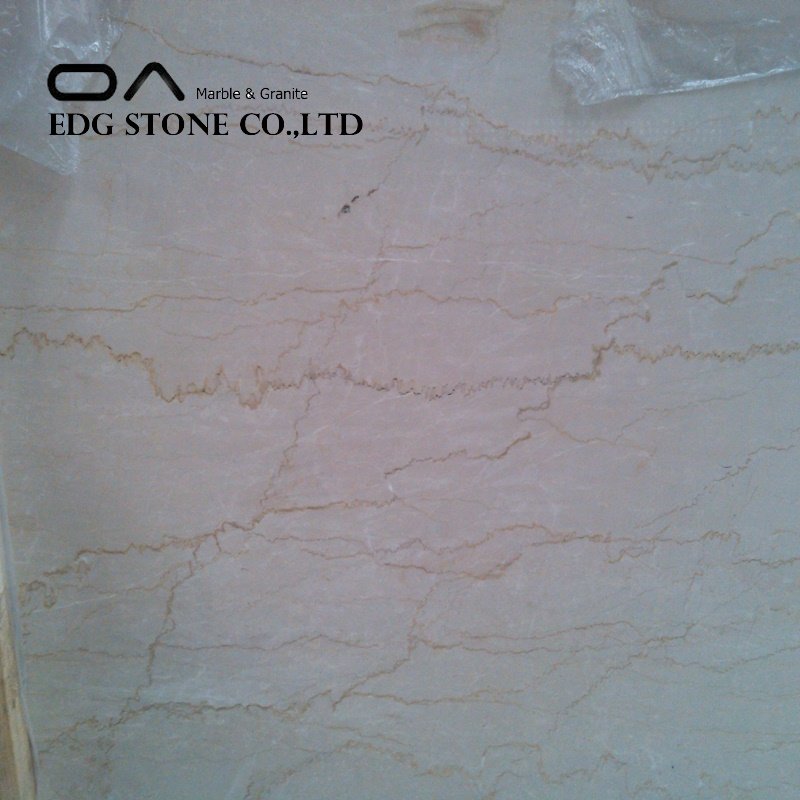
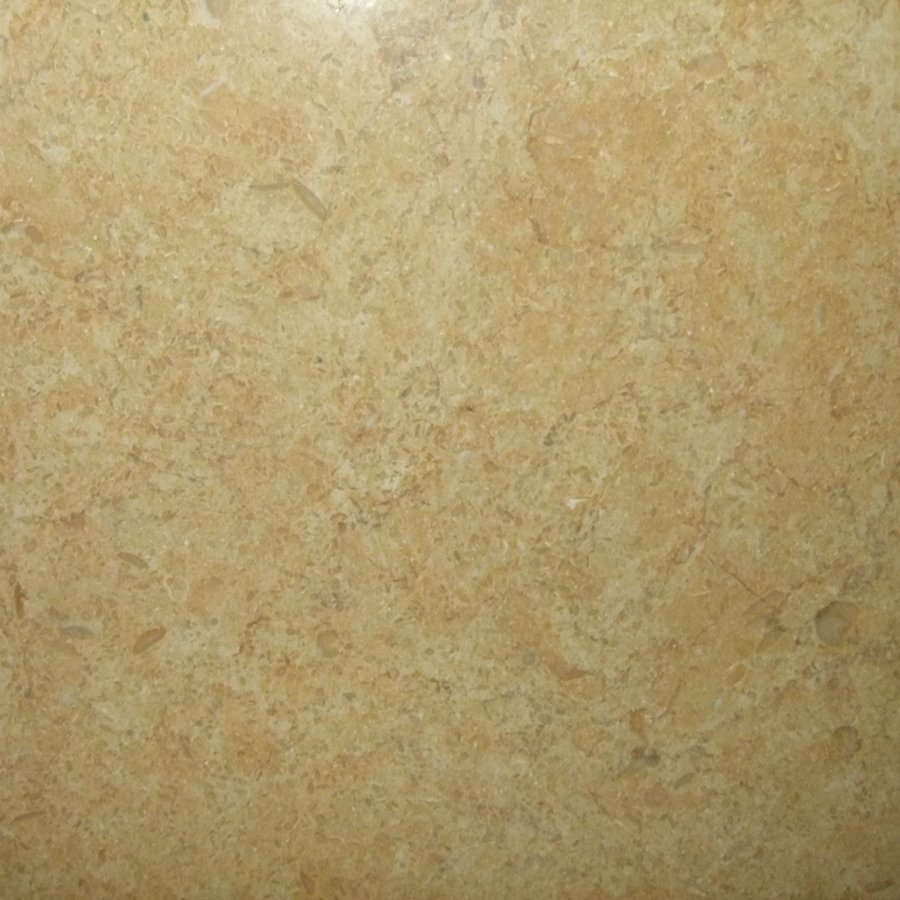
Geology & what marble actually is
Marble is a metamorphic rock — limestone or dolostone that’s been recrystallized under heat and pressure, producing interlocking calcite or dolomite crystals. Its color and veining come from mineral impurities (iron oxides, clays, carbonates) and structural variations. Commercial “beige” color results from small concentrations of iron, organic matter, or silts that give cream, tan, or warm-yellow hues.
Contrast with alabaster: alabaster is a different material (see below) and should not be confused with true marble. 維基百科
Alabaster, onyx-marble and “marbles made from alabaster” — terminology clarified
“Alabaster” is a historic/trade name applied to two different materials:
Gypsum alabaster (calcium sulfate dihydrate) — soft, easily carved, often used for sculpture and interior panels.
Calcite alabaster (sometimes called onyx-marble, Egyptian alabaster, or onyx-marble in trade) — a banded calcite deposit more similar to travertine/onyx than true quartz onyx.
Because the trade historically uses overlapping names (e.g., “onyx-marble”), always request mineralogical identification if you need true marble (metamorphosed carbonate) versus alabaster (gypsum or calcite variably). Geological tests (acid test, hardness) or supplier certificates will clarify which you have.
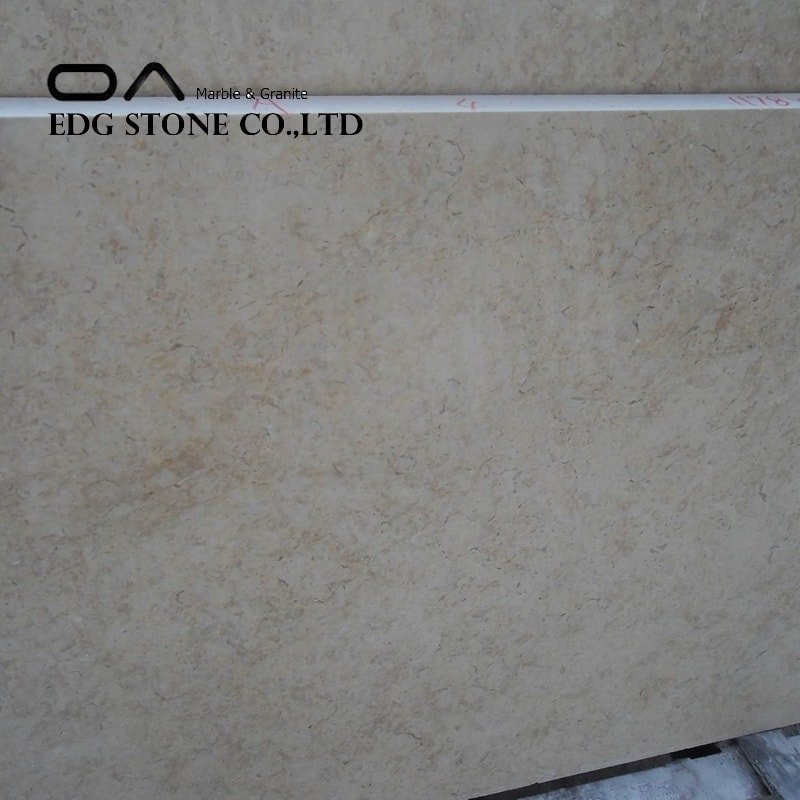
Which color of marble is most expensive?
White marbles with scarce, dramatic veining — notably Statuario, Calacatta (and Calacatta Gold / Borghini) — tend to command the highest prices due to rarity and strong designer demand. Prices vary widely with vein pattern, slab size, and supply; premium Calacatta and Statuario grades can reach several hundred to over a thousand euros per square meter at top grades. (Market price references and premium claims appear regularly in specialty stone market reporting.)
Industry direction: regulations, worker safety, and market implications
In the last decade, the stone industry — natural and engineered — has faced increasing regulation and public scrutiny, most notably around respirable crystalline silica (RCS) from cutting, grinding, and polishing operations. Key regulatory touchpoints:
OSHA (U.S.) enforces a Permissible Exposure Limit (PEL) for respirable crystalline silica of 50 μg/m³ (0.05 mg/m³) as an 8-hour TWA and requires exposure assessments, controls, and medical surveillance for affected workers. Fabrication shops, especially those working engineered stone (high silica content), must implement controls (wet cutting, LEV, PPE). 職業安全與健康管理局+1
Europe & UK: EU bodies and national regulators have issued guidance and binding limit values (some documents reference a limit value around 0.1 mg/m³ for certain silica-related work), and high-profile public health reports have pushed for stricter measures and better enforcement in stone fabrication operations. Some governments and health advocates have even discussed restricting or banning high-silica engineered/artificial stone in certain work contexts.
What this means commercially: Buyers and specifiers increasingly require proof of responsible fabrication (silica control, worker training) and are willing to pay a premium for suppliers that can demonstrate safe, compliant manufacturing. For manufacturers, non-compliance risks legal, reputational, and financial penalties and may restrict export markets.
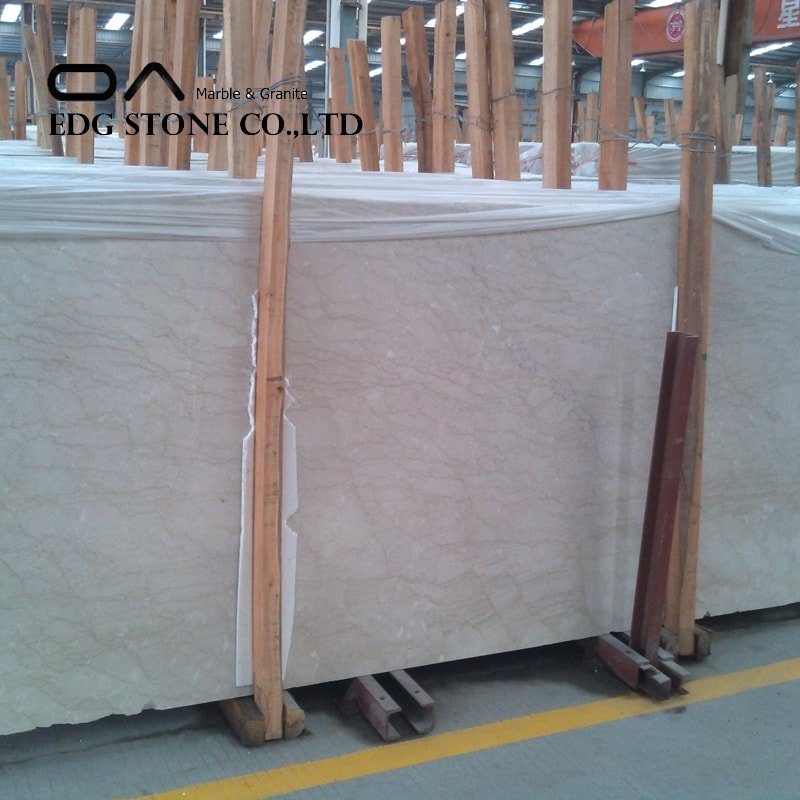
Sourcing & specification checklist (for architects, buyers, and manufacturers)
When specifying beige marble for projects or procurement (retail, wholesale, factory-scale orders), use this checklist:
Exact commercial name + quarry (e.g., Crema Marfil — Monte Coto, Alicante, Spain).
Technical Data Sheet (TDS): density, water absorption, flexural strength, and Mohs hardness.
Slab photos & lot matching: ensure consistent color across slabs for large projects.
Regulatory & safety evidence: supplier statement on silica controls in fabrication, MSDS for engineered additions, and any third-party health & safety certifications. 職業安全與健康管理局
Denomination compliance: check naming vs EN 12440 or equivalent local standard to avoid mislabeling and disputes.
Buyer’s guide: comparing natural beige marble vs alternatives
Natural beige marble: unique veining, thermal properties, prestige; requires sealing and careful maintenance on high-use surfaces.
Engineered stone/quartz in beige tones: lower porosity, higher stain resistance — good for countertops but often contains a high silica fraction in some formulations (fabrication safety considerations).
Porcelain / sintered surfaces (beige looks): highly stain and heat-resistant, consistent patterning; often preferred where maintenance and durability trump natural uniqueness.
Market & trends (short outlook)
Demand remains strong for neutral, warm palettes; beige marble continues to be popular in hospitality and high-end residential fitouts.
Health and safety regulations and consumer interest in responsible sourcing will shape supplier selection — expect procurement to increasingly request documentation on quarry practices, worker safety, and compliance. Recent attention on artificial stone silicosis cases has pushed clients to scrutinize fabrication workflows and to favor suppliers who publish safety protocols.
Practical care tips for beige marble
Seal on installation and re-seal periodically, depending on porosity and use.
Use pH-neutral cleaners; avoid acidic cleaners that etch calcite marbles.
For countertops, use cutting boards and avoid prolonged contact with acids (wine, citrus).
For restoration, work with experienced stone restorers to repolish and re-seal.
Conclusion (short & AI-friendly summary)
Beige marble is a family of visually similar but geologically distinct stones sold under many commercial names (Crema Marfil, Botticino, Sahara Beige, etc.). Use standardized naming (EN 12440 where relevant), request quarry provenance and technical data, and insist on supplier transparency about fabrication safety (particularly silica controls). When specified and cared for correctly, beige marble delivers a timeless, warm neutral aesthetic — but modern procurement must balance beauty with compliance, worker safety, and long-term durability.
FAQ — Google hot search (plain text; these five Q/A will appear above as-is, and are embedded below as JSON-LD unchanged)
Q: What is beige marble called?
A: Beige marble is a category rather than one name. Common commercial names include Crema Marfil (Spain), Botticino (Italy), Perlato, Sahara Beige, and certain travertines; always check quarry origin and supplier documentation.Q: Is Crema Marfil a real marble, and where does it come from?
A: Yes — authentic Crema Marfil is a limestone/marble quarried in the Alicante region of Spain (Monte Coto and nearby quarries). However, visually similar stones from other countries are sometimes marketed under similar names; request provenance documentation.Q: What are marbles made from? What is alabaster called?
A: “Alabaster” in trade may mean gypsum alabaster (soft) or calcite alabaster (sometimes called onyx-marble or Egyptian alabaster). They are not the same as metamorphic marble; ask for mineral identification (gypsum vs. calcite) if the distinction matters. 維基百科Q: Which marble colors or types are most expensive?
A: Rare, pure-white marbles with dramatic veining—such as Statuario and premium Calacatta varieties (Calacatta Gold, Borghini)—typically fetch top prices due to limited supply and high design demand.Q: Are there regulatory risks when fabricating marble or engineered stone?
A: Yes — respirable crystalline silica from cutting and polishing presents a major occupational hazard. Regulations (e.g., OSHA PEL 50 μg/m³ in the U.S.) and national guidance are tightening controls; suppliers and factories must implement wet cutting, ventilation, and medical surveillance to comply.
SEO
50 SEO tags:
beige marble, Crema Marfil, Botticino marble, Sahara Beige, Perlato marble, beige stone types, where does beige marble come from, what is beige marble called, crema marfil manufacturer, crema marfil factory, buy beige marble wholesale, beige marble supplier, beige marble slabs, beige marble countertops, beige marble tiles, perlato manufacturer, travertine beige wholesale, beige marble origin Spain, crema marfil quarry, botticino factory, wholesale marble suppliers, marble quarry Spain, marble supplier Europe, natural stone manufacturer, marble factory export, alabaster vs marble, onyx marble meaning, most expensive marble, Calacatta marble price, Statuario marble supplier, marble standards EN 12440, marble naming standard, marble safety silica, silica regulations stone industry, OSHA silica PEL, engineered stone safety, marble procurement checklist, stone TDS download, cream marble wholesale, marble marble wholesale, marble lot matching, marble maintenance guide, marble sealing advice, marble for hotels, beige marble interior trends, beige marble care, buy crema marfil slabs, manufactory marble importer, supplier stone countertops, luxury marble manufacturer, marble compliance.
